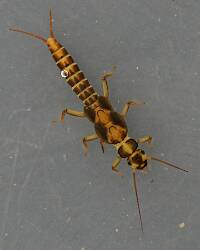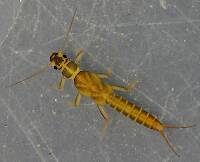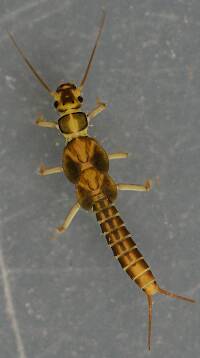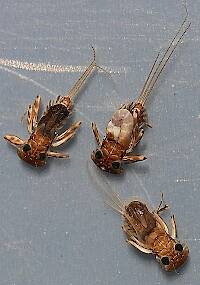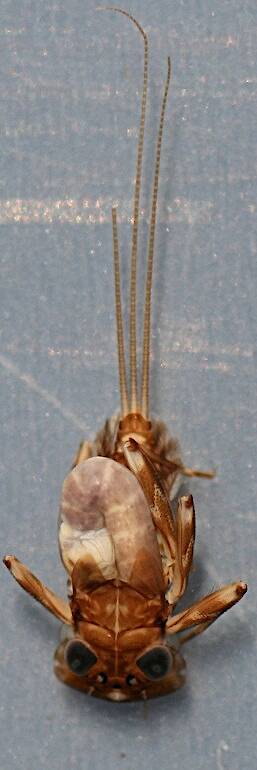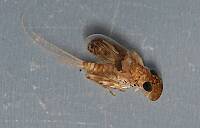
Hex Mayflies
Hexagenia limbata
The famous nocturnal Hex hatch of the Midwest (and a few other lucky locations) stirs to the surface mythically large brown trout that only touch streamers for the rest of the year.
Featured on the forum

This species was fairly abundant in a February sample of the upper Yakima.

Troutnut is a project started in 2003 by salmonid ecologist Jason "Troutnut" Neuswanger to help anglers and
fly tyers unabashedly embrace the entomological side of the sport. Learn more about Troutnut or
support the project for an enhanced experience here.
ReelnCreel has attached this picture to aid in identification. The message is below.
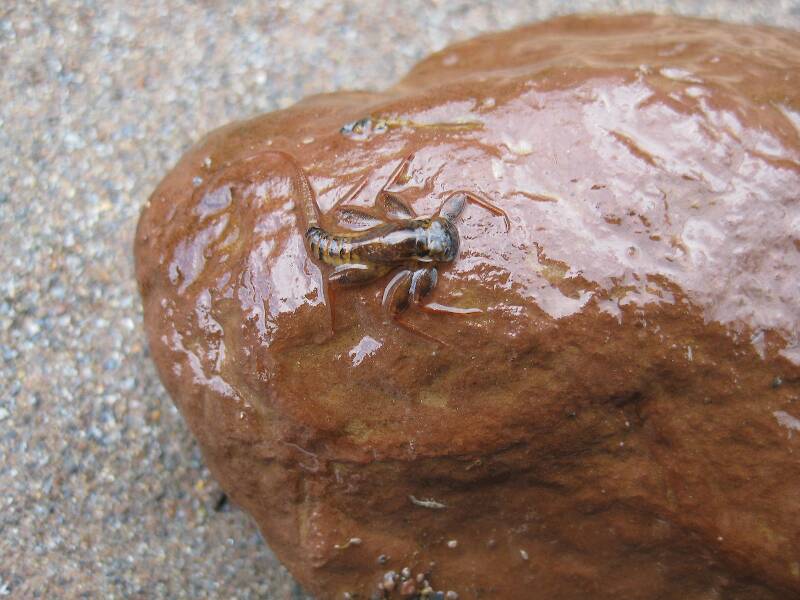
ReelnCreel
Posts: 3
Posts: 3
ReelnCreel on Apr 25, 2010April 25th, 2010, 1:35 pm EDT
Hi,
I live in Nova Scotia. Found this guy in a river that runs into the Avon River which runs into the bay of fundy. This guy was not far from a tidal area. Hes quite different from all the other nymphs in the area which I assume where mayfly. Only one tail and its quite red. Just wondering what it is.
Thanks
I live in Nova Scotia. Found this guy in a river that runs into the Avon River which runs into the bay of fundy. This guy was not far from a tidal area. Hes quite different from all the other nymphs in the area which I assume where mayfly. Only one tail and its quite red. Just wondering what it is.
Thanks
Martinlf on Apr 25, 2010April 25th, 2010, 1:39 pm EDT
Cool. The bug guys will eventually have a go at this. Are you sure about the one tail, though? Could the other(s) have been broken off at some point?
"He spread them a yard and a half. 'And every one that got away is this big.'"
--Fred Chappell
--Fred Chappell
Dryfly on Apr 25, 2010April 25th, 2010, 1:44 pm EDT
It's a heptageniid. No idea what species though.
ReelnCreel
Posts: 3
Posts: 3
ReelnCreel on Apr 25, 2010April 25th, 2010, 1:46 pm EDT
pretty sure about the one tail, he had it raised at one point
ReelnCreel
Posts: 3
Posts: 3
ReelnCreel on Apr 26, 2010April 26th, 2010, 11:42 am EDT
Yeah, simply searching for mayfly nymph pictures i get a few that look the same and have very similar coloring. It's crazy how diverse insects are. I've seen two other types of nymphs in the same area, having completely different size and colors but more common shape. Not to mention all the other creepy crawlies. Thanks a lot for your help guys.
Quick Reply
Related Discussions
Topic
Replies
Last Reply
5
Jan 11, 2015
by Entoman
by Entoman





